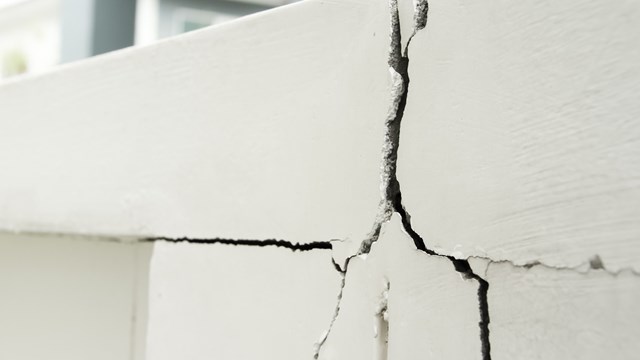In New York City, elevators are to vertical transportation what taxis and the subways are to horizontal transportation: ubiquitous and necessary, but not always safe. While newspapers eagerly report on subways that derail or on the latest taxi-jacking, elevator accidents don’t seem to grab as many headlines. Consequently, we ride assuming that this particular mode of transport, now nearly 150 years old, will take us safely from point A to point B.
Unfortunately, elevator safety is not a foregone conclusion. Between 1992 and 1996, New York City averaged one elevator accident every five days, resulting in over 379 injuries and 30 deaths. Many such incidents could have been prevented through careful attention to safety and maintenance requirements. Co-op boards and building owners, not elevator maintenance organizations, are ultimately responsible for the safety of a building’s elevators. They are the ones responsible for insuring that proper and timely maintenance is carried out on existing elevators and that elevators that are no longer in passable condition be renovated or replaced.
Safe or Unsafe?
How can you, an average elevator rider, determine whether an elevator is safe or not? Most people would assume that a cursory glance at the inspection certificate posted in the cab of any elevator tells all. If the lift in question has passed its most recent safety inspection, most would reason that it’s safe and in good working order.
As it turns out, this civilian certificate-check is naive. Only certified elevator inspectors can determine to the fullest extent whether an elevator is safe for passengers. The inspections they must perform go beyond the annual inspection that renews the certificate. This means that even if a certificate seems to be up-to-date, there may be a number of other inspections that have not been performed.
Local Law 10 of 1981 and its amendment, Local Law 48 of 1991, govern elevator inspections and specify the frequency and types of inspections that must be performed. The Department of Buildings (DOB), which oversees all construction and alteration of buildings in New York City, is required to perform three inspections every two years, but the DOB inspection is insufficient to guarantee elevator safety. "The city inspection is purely visual. They don’t carry tools," says Hubert Hayes, president of the Brooklyn consulting firm Hubert Hayes, Inc. "They only inspect for maintenance, not for safety."
In addition to the city inspection, the owner of the building is responsible for a number of other inspections, for which he hires a private contracting firm or an inspection agent. These inspections include an annual buffer return test, a full-load inspection every five years, a no-load safety test every two years, and a host of smaller tests to be performed on a monthly basis.
Hayes points out one safety concern in the arena of private inspections: "No conflict of interest laws prevent elevator contractors from inspecting their own work." In such cases, contractors who discover problems may be reluctant to point them out to the owner. According to Hayes, "It is vitally important for owners to look the situation straight in the eye and demand that a third party perform the inspections. A third party, paid for by the property owner, with no ties to the elevator contractor, gives an honest evaluation of the equipment and makes sure the equipment is being maintained properly by the contractor."
In addition to keeping up to date with inspections, use of common sense will help maintain a safe and attractive elevator. "Cab doors tend to take a lot of abuse," says Lisa Perry, sales administrator with Nouveau Elevator in Brooklyn, New York. "If you’re stuck in the elevator, don’t pry the doors open. I hear of people using crowbars, which just damage the doors." Perry also recommends putting pads in the elevator when moving furniture. "It’s important for the owner to protect the investment that he or she makes in an elevator," says Perry.
Keeping Special Needs in Mind
Elevators present particular safety challenges to residents with special needs, especially if the elevator was designed and installed before passage of the Americans with Disabilities Act (ADA). The ADA set down guidelines for accessibility and usability standards for elevators, including everything from the reach range for button heights, to hands-free two-way communication, to the size of the cab in relation to the door.
Buildings that redo their common spaces, such as the lobby, must renovate in compliance with ADA standards. Certain co-ops may be exempt from these regulations, so boards should research the issue before going forward with renovations. Updating an elevator to meet the ADA requirements, while not usually mandated, may prove useful for tenants. "Even if a building doesn’t have any disabled tenants, there will still be visitors or relatives with special needs, or temporarily disabled people," says Douglas Boydston of Handi-Lift, a company based in Clifton, New Jersey that specializes in handicap-accessible elevators.
Elevator malfunctions, no matter how minor, can cause serious problems for disabled or elderly residents. "Leveling can be critical," says Boydston. "If an elevator is not leveling properly, [stopping with the cab floor level with the building floor] even a half-inch low or high, that’s a serious hazard for someone who’s older or who uses a walker."
Another concern for disabled residents is how to cope when an elevator is temporarily out of service, due to remodeling or repair work. "It’s tough on a building owner and on the residents when you have to shut down an elevator for two months," says Boydston. For residents who are unable to negotiate stairways, Boydston recommends installing a portable stair-climbing device such as the Stair-Track. "The Housing Authority used the Stair-Track when they were remodeling elevators in single-elevator buildings. It’s an excellent solution for smaller buildings," says Boydston.
Renovation vs. Overhaul
If an elevator needs to be refurbished or replaced, the co-op board or owner has serious questions to ponder. Should they hire a contractor, or should they spend some extra money for a professional elevator consultant?
Daniel Walsh of Walsh Associates, a Manhattan elevator consulting firm, explains the advantages of hiring a consultant. "Consultants represent the owners’ interest in the project. We design the elevator system for them, put the project out to bid, manage the bidding process, select vendors in conjunction with the owners, and manage the project as it progresses."
Alternatively, a co-op or condo can solicit bids from a number of contractors, evaluate the bids, and choose a contractor to oversee the job. But the decision-making process is more complicated than just going with the lowest bid. "Owners and co-op boards have no way of guaranteeing apple-to-apple pricing, and they may lack the technical competency to evaluate bids," says Walsh.
Project prices and time frames vary considerably, depending on the size and the nature of the project. According to Perry, once a design has been approved for a new elevator, a typical time frame might be "12 to 15 weeks of lead time on parts, and then one-and-a-half to two months of down time." A new cab can cost from $10,000 to $30,000, depending on the size of the cab, materials, and fixtures.
Warranties on parts and service can range from no warranty at all to five-, ten-, or 20-year, full-service contracts. Most parts come with a one-year warranty. On maintenance contracts, Hayes warns against signing any contract other than a full-service contract, which "spells out everything that the contractor needs to repair and replace." If a specific part is not mentioned in the contract, it may not be covered, so make sure that the parts are named individually.
There are special concerns for putting a new elevator in an old building that go beyond aesthetic continuity. "Elevators need to be kept away from any type of water," says Perry. "Sometimes older buildings have skylights, or the roof leaks, which causes water damage. The owner may have to install a sump-pump in the pit in order to install a new elevator."
Aesthetic concerns, on the other hand, are usually easy to manage. "When we install a new elevator or repair an old one, we bring the equipment, brains and technology up to 2001 standards," says Perry. "The cab interior, meanwhile, can be anything the client wants. If they want an old-fashioned look, we work with the fixture manufacturer to create a look that’s not too high-tech."
As with bodily health, so too with elevator health: An ounce of prevention is worth a pound of cure. Whether renovating an existing elevator, installing a new one, or just plugging along with what they’ve got, co-ops and condos should insist on regular inspections, design features that promote safety, and safe, conscientious use by all residents riding the elevator.
Ms. Witty is a freelance writer based in Brooklyn.







Comments
Leave a Comment